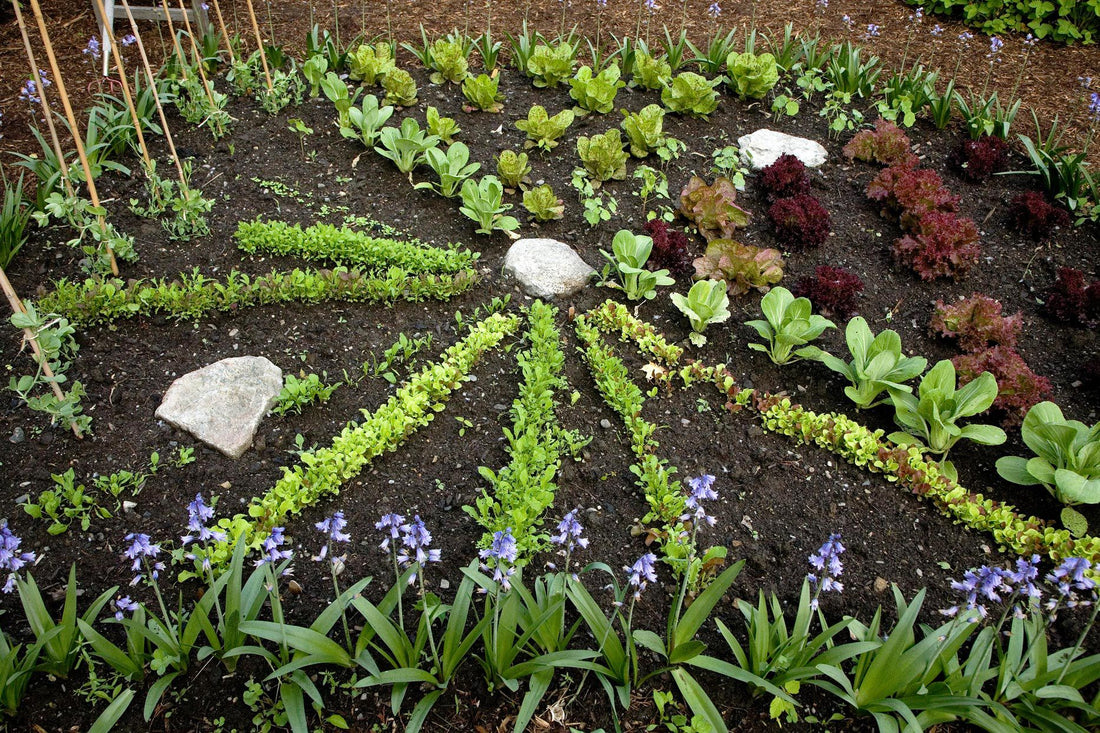As the summer heat starts to fade and cooler days set in, fall becomes a fantastic time for gardening in Zone 8b. With its mild temperatures and extended growing season, this region offers gardeners a second chance to plant vegetables, herbs, and flowers that will thrive before winter’s chill arrives. If you’re looking to make the most of your fall garden, here’s a guide to help you plan, plant, and harvest in Zone 8b.
:strip_icc()/vegetable-garden-6f4437a1-b563f4c6bbe44e0d85a63965d6240c39.jpg)
Why Fall Gardening in Zone 8b?
In Zone 8b, fall is an ideal time to garden because the climate remains warm enough for many plants to establish themselves. The cooler weather also reduces the risk of heat stress, making it easier for your plants to grow without the struggle of extreme temperatures. Additionally, there’s less pressure from pests that may have plagued your summer garden, giving you a cleaner, healthier space to cultivate.
What to Plant in the Fall
Fall gardening in Zone 8b can be incredibly rewarding, offering a wide variety of crops that grow well in cooler conditions. Here are some excellent choices for your fall garden:
Vegetables:
- Leafy Greens: Spinach, kale, arugula, and lettuce all thrive in cooler temperatures, growing quickly and offering fresh greens well into the fall.
- Brassicas: Broccoli, cauliflower, Brussels sprouts, and cabbage are cold-tolerant and develop their best flavors during cooler weather.
- Root Vegetables: Carrots, beets, radishes, and turnips grow well in the fall and can even be harvested in early winter.
- Garlic and Onions: Plant garlic and onion sets in the fall for a late spring or early summer harvest.
Herbs:
- Parsley, Cilantro, and Dill are excellent herbs to plant in the fall. They love the cooler temperatures and will add flavor to your meals throughout the season.
Flowers:
- Pansies and Violas: These hardy flowers not only brighten up your garden but can survive light frosts, adding color to your space well into winter.
- Snapdragons and Mums: Perfect for adding vibrant fall colors, these flowers do well in the mild climate of Zone 8b.

Botanical Interests is having a huge sale right now! You can get lots of seeds and tools for 30% off! Check it out: https://www.botanicalinterests.com/
Tips for Successful Fall Gardening
-
Prepare Your Soil: After the summer season, your soil may be tired. Give it a boost by adding compost or organic matter to replenish nutrients. This will ensure your fall crops have a fertile environment to grow in.
-
Start Early: While fall is cooler, it’s important to start planting early enough for crops to establish before the first frost. In Zone 8b, you generally have until late October or early November before the first frost, so aim to plant at least 6-8 weeks before that.
-
Water Wisely: Fall rains can be sporadic, so monitor your garden’s moisture levels. Water your plants consistently, but avoid overwatering, as the cooler temperatures mean less evaporation.
-
Use Mulch: Applying a layer of mulch around your plants helps retain soil moisture and keep roots insulated as the weather cools down. Mulch also suppresses weeds, giving your garden a cleaner, more manageable look.
-
Watch for Frost: While Zone 8b has a mild fall season, frost can still occur later in the year. Protect tender plants by covering them with row covers or blankets on nights when frost is expected.
Harvesting Timeline for Fall Crops
Here is a helpful timeline to guide you on when to expect your fall garden to be ready for harvest. Based on planting during the first week of September, you can expect the following crops to mature at these times:
| Vegetable/Herb | Planting Date | Harvest Date |
|---|---|---|
| Spinach | First week of September | Late October - Early November |
| Kale | First week of September | Late October - Early November |
| Arugula | First week of September | Late September - Mid October |
| Lettuce | First week of September | Mid October - Early November |
| Broccoli | First week of September | Mid December - Early January |
| Cauliflower | First week of September | Mid December - Early January |
| Carrots | First week of September | Late November - Mid December |
| Beets | First week of September | Late November - Mid December |
| Radishes | First week of September | Mid October - Late October |
| Turnips | First week of September | Late October - Mid November |
| Garlic | First week of September | Late Spring |
| Onions | First week of September | Late Spring |
| Parsley | First week of September | Mid October - Early November |
| Cilantro | First week of September | Mid October - Early November |
| Dill | First week of September | Mid October - Early November |
Fall Garden Maintenance
In addition to planting, fall is also an excellent time to take care of maintenance tasks in your garden. Clean up any debris left from summer crops, prune back overgrown perennials, and collect leaves for your compost pile. Fall is also a good time to plan for winter by dividing perennials and planting bulbs for spring.
Benefits of Fall Gardening
Not only does fall gardening extend your growing season, but it also helps improve the health of your garden. Cooler weather gives plants a break from summer stress, and adding organic matter to your soil can build fertility over the winter months. Plus, harvesting fresh produce well into late fall is a rewarding experience that keeps your kitchen stocked with homegrown flavors.
Wrap-Up: Enjoying the Fruits of Your Labor
With the mild climate of Zone 8b, fall gardening can be a wonderfully productive time. Whether you're growing vegetables, herbs, or flowers, the season offers a unique opportunity to extend your gardening enjoyment beyond summer. So grab your trowel, refresh your soil, and plant some cool-weather crops to keep your garden thriving through the fall.
Happy Gardening!

